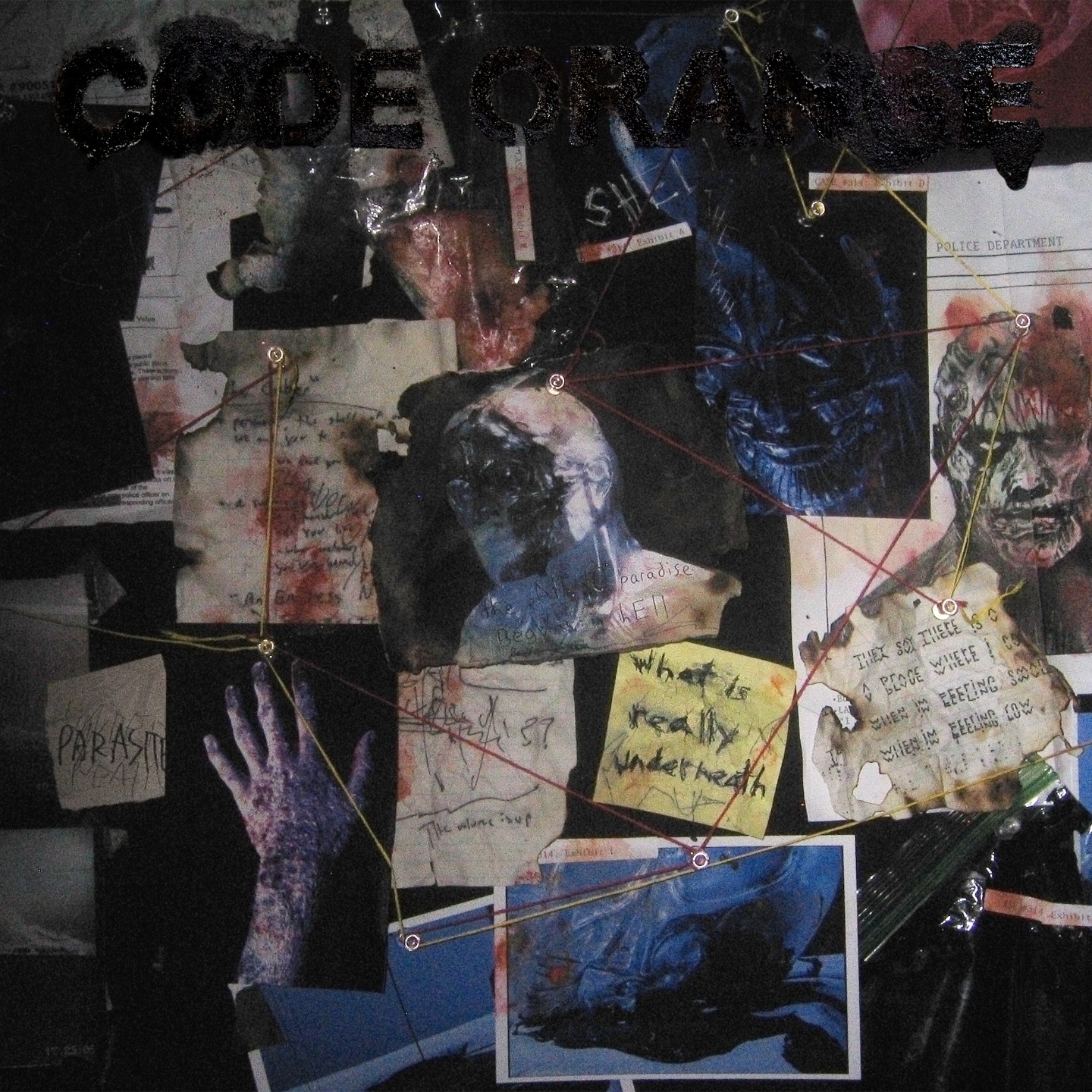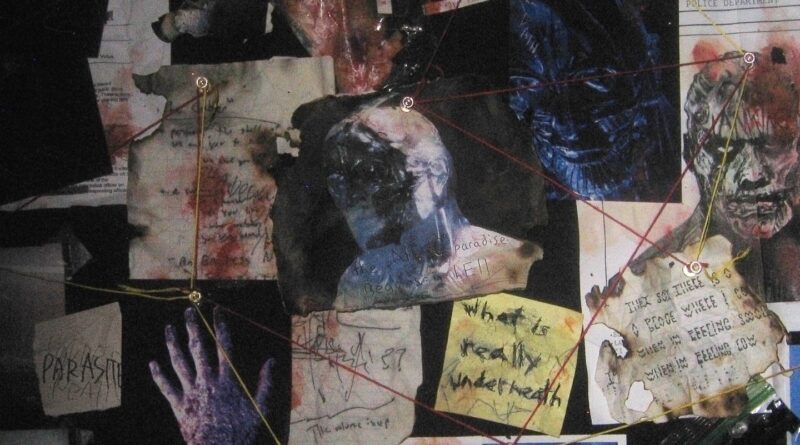ALBUM REVIEW: What Is Really Underneath? – Code Orange
CODE ORANGE’s Underneath is one of the most celebrated releases of the last few years and just when fans think they might have squeezed every bit of juice from it, it’s time to go back inside the glass. What Is Really Underneath? is a companion piece to their 2020 release that strips away a lot of the core elements to give you a completely new experience. If you thought you knew the answers to the questions already, prepare yourself because this pushes the envelope further than it has ever gone before.
For a band with such a wealth of creativity, it shouldn’t be surprising that not only have they been working on this 14-track project in secret, it comes with an accompanying animated film. If you want the full head-spinning experience, that’s the way you should consume the music but it is a bit like being tumble dried inside the matrix. CODE ORANGE’s visual style for Underneath, which takes some very bold decisions in their use of 90s graphics/PS2 cutscenes, always walks a thin line between unnerving and schlocky horror/sci-fi. It’s a difficult tone to get right and here, it plays with that in some interesting ways. Paired with trying to break down what you’re hearing, it’s a lot to take in but that’s not necessarily a bad thing.
What Is Really Underneath?’s material seems to fall into two camps. Half of the record is part accompaniment to the visuals that it’s hard to imagine anyone taking for a second spin away from the animated film. The other half is more of a straight-up remix album that feels less like a soundtrack and more like totally reimagined versions of old songs that play around with Underneath‘s material.
So what is really left from Underneath is the first question. The theming and world of the original record is the key thing, and that balance of horror and sci-fi that is pushed way further than before here. With this essentially being an electronic record, the band double down on the atmospheric horror but then juxtapose that completely with the dance and techno elements that add a whole new unpredictable element to CODE ORANGE. The vocals are also used sparingly in the form of dance track hooks. A track will usually feature a line or two from the original release but here they are stripped back and put on a loop to serve as the hook. Thanks to both Jami Morgan and Reba Meyers’ performances on the 2020 project, they still sound great and full of character and that means they don’t feel too out of place when put on repeat throughout a track. The interjection of vocal samples doesn’t feel like a callback or a loose attempt to connect the two projects, it adds something to the electronic landscape that works in the context of everything else that’s happening.
As you would expect from a release that leans on CODE ORANGE’s use of electronics, things get dark, twisted and abrasive pretty fast. The trilogy of Prismatic Shame, The Cutters Theme and Down We Go are great examples of how they use this in different ways. Prismatic Shame makes great use of Meyers’ vocals from the track Who I Am to craft this soundtrack piece that doesn’t feel far off the work they’ve done for the WWE wrestler Bray Wyatt and his many incarnations in terms of atmosphere. The Cutters Theme does exactly what it says on the tin. Drawing from the likes of John Carpenter, it sets out a simple but memorable melody that slowly builds over time as theme music for the monstrous creation seen on Underneath’s artwork. Down We Go is where things get oppressive. It’s a treat for listeners with headphones that pick up the minor details and this is where the record feels like more of an accompanying soundtrack than anything else. Think of the work of the band GOBLIN on their scores for the likes of Dario Argento’s Suspiria, but filter it through an industrial landscape. It’s a very logical step for the band to take on this kind of release.
The most surprising turn on What Is Really Underneath? is when they use their electronics in a way that they’ve never dived into before. The track Out For Blood certainly split the CODE ORANGE fanbase by sounding far removed from their hardcore foundations and leaning into the industrial elements of their sound and this feels like an extension of that. Right at home in the opening nightclub scene in 1998’s Blade, tracks like So Below and Club. Cold. Metal. are big electronic techno/dance tracks akin to the likes of CARPENTER BRUT or PERTUBATOR. It is definitely the furthest their sound has been pushed.
With that, it may also push too far for some fans; after all, it’s a sound with some crossover but not something you’d see coming from the band that wrote Forever. For others, it’s another extension of the horror/sci-fi theming just through a different lens, albeit a much more upbeat and colourful one. Even still, it has that seedy feel of a Hotline Miami soundtrack and the weight of the industrial music it’s drawing from. Out For Blood hinted at some of these elements but this takes them much further than that particular track. The more atmospheric-focused soundtrack sections are what you would expect from this band. The reworking of songs into something entirely different though is what keeps them so unpredictable. If you thought Out For Blood felt like a throwback, you ain’t seen nothing yet.
The soundtrack parts of What Is Really Underneath? are a way to dive even deeper down the rabbit (w)hole into Underneath and look at the world of that record from a different angle. It’s hard to imagine coming back to them for repeated listens, but they establish a landscape in the way a soundtrack would. The tracks that use some of the elements and themes and take them into new territory are more likely the ones to keep people coming back to his particular release, assuming you’re on board with music that sounds like it could play during the credits of 2003’s Underworld.
All in all, there’s a combination of things happening here that screams out one particular musician’s name and that’s Trent Reznor. NINE INCH NAILS is the obvious comparison that comes to mind when you think about nailing these two elements. Big electronic-infused tracks that drip in a slick black oil that has permeated goth club nights for years. On the other hand, there’s a use of the exact same elements to produce music that is both challenging and rewarding with time. Exhibit A of this comparison comes right at the end of What Is Really Underneath? with the track The Path To Paradise that would sound perfectly at home on The Downward Spiral. As you start to feel a little lost, broken down and overwhelmed with what you’ve just been through, there’s a voice that says let’s do it again.
Rating: 8/10

What Is Really Underneath? is out now via Blue Grape Music.
Like CODE ORANGE on Facebook.

